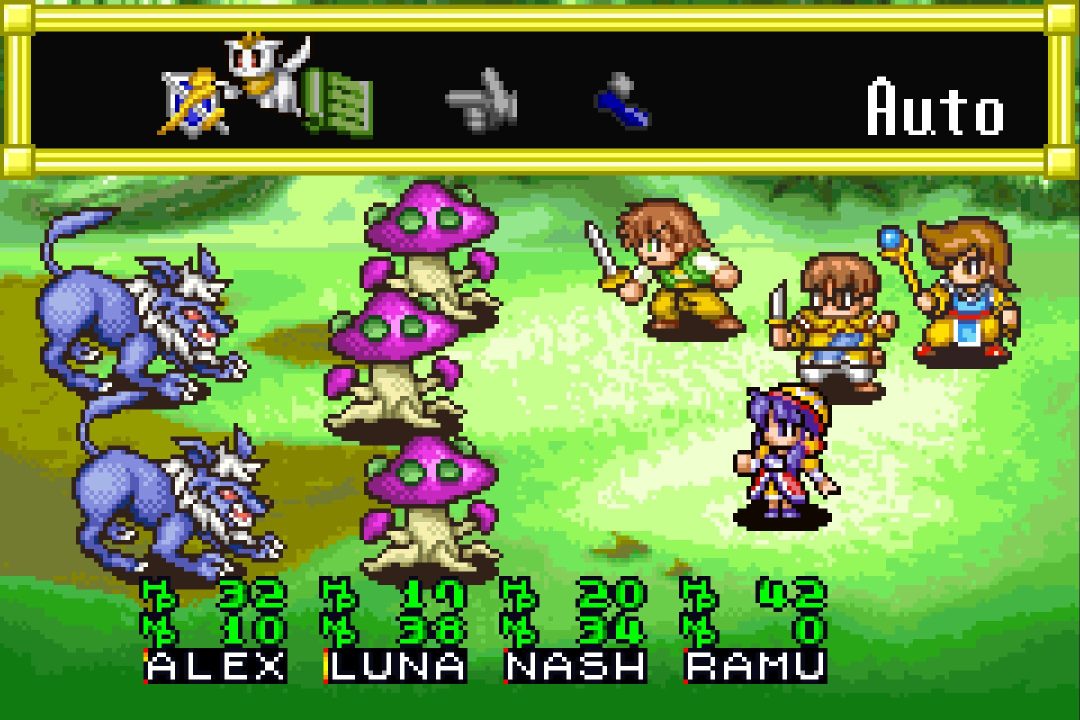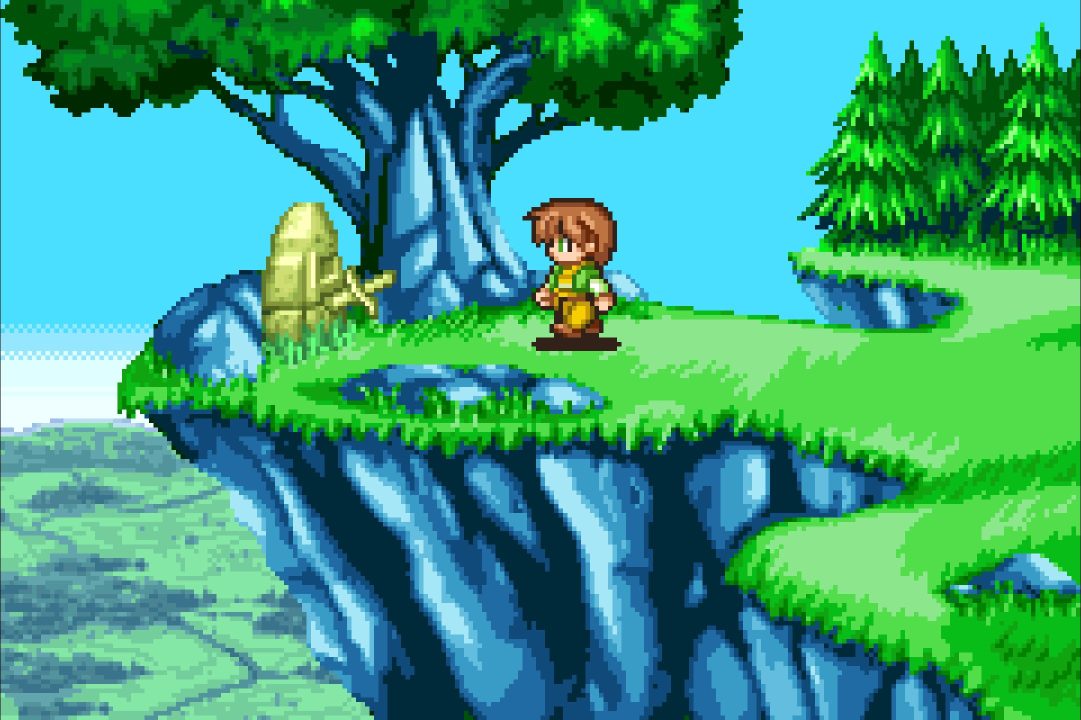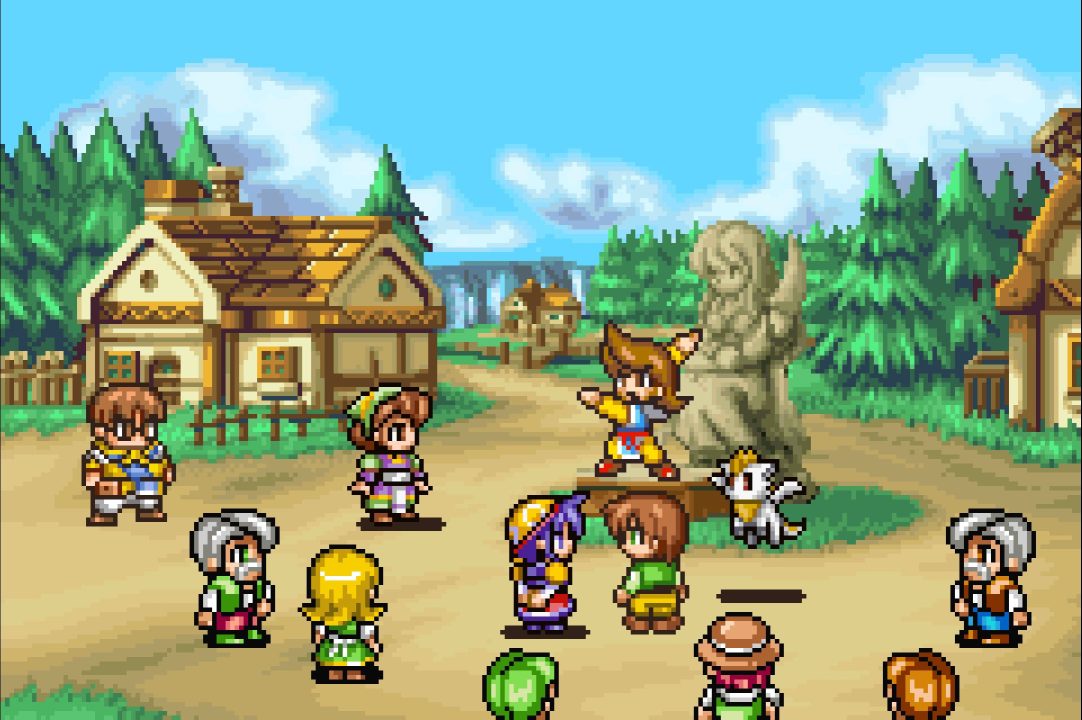When I look back at my gaming history, the system that cemented my love of games in general and RPGs in particular is the Gameboy Advance. The clamshell silver brick that was my Game Boy Advance SP kept me occupied in the backseat as my mom ran errands while I played Golden Sun: The Lost Age. It kept me up far too late at night, a little rectangle of light glowing beneath my covers as I finished the final battle against the dragon in Fire Emblem. It even gave me my first taste of the Final Fantasy series as I got lost in the fantasy world of Ivalice in Final Fantasy Tactics Advance. Among all those formative RPG experiences that established my gaming tastes for years to come, a name is conspicuously absent: Lunar Legend.
It would be another 15 years before I even heard of the series that got its start on the Sega CD, but playing Lunar Legend made me realize how much I would’ve loved this game had I played it during my childhood: the charming cast of characters, the traditional yet engaging turn-based combat, the classic adventure story and fantasy world to explore. Unburdened by the knowledge of what had come before, Lunar Legend might have been my first and only reference point for Game Arts’ breakout hit and easily would’ve joined the pantheon of portable RPGs I hold so dear. Alas, this is not my first experience with Lunar, and this interesting yet flawed initial portable version doesn’t have the benefit of nostalgia and ignorance. Lunar Legend is a quasi-remake and simultaneously a de-make of the original; it improves immensely on the original in a few areas and makes significant compromises in others to adjust to the portable format. For most players, I find it hard to recommend revisiting, but if you hold the Game Boy Advance as dear to your heart as I do, you will find a unique version of a seminal classic that tickles the nostalgia itch in all the best ways.
The most apparent changes between Legend and the previous versions of Lunar are visual. Both The Silver Star and Silver Star Story Complete have relatively simple, small sprites with limited animation, a consequence of the constraints of early 16-bit game development and a small team. Legend has a brighter color palette, though not nearly as washed out as some earlier GBA titles, and has a nearly complete rework of the character and enemy sprites. Gone are the inscrutable, squat little figures mostly distinguishable by their hair colors. Replacing them are much larger and more detailed sprites with slightly more realistic proportions and actual facial features. The visual facelift elevates the game’s visuals in line with other GBA RPGs of the time and gives Legend a distinct flavor that retains the familiarity of the original sprites while breathing new life into the presentation.
The animation work improved significantly, trading overly simple battle animations for bespoke actions for each character that accentuate their personalities. For example, Kyle takes a moment to plant his feet before taking a big swing of his two-handed sword, while Alex nimbly jumps into position before unleashing a quick flurry of blows. Magic users have their own unique and flashy animations: Mia forms a glowing purple magic circle beneath her feet before unleashing storms of fire and ice against her foes, Jessica lets her hood down as she says a prayer for healing magic, and Nash strikes a cocky pose as lightning crackles and fills the battlefield. The characters are stars of the show, and Legend understands this, making sure that different battle conditions result in character-specific actions. When I was trudging through the dungeon inside Vane’s magic school, where weapons are forbidden, I realized that an unarmed Nash makes a big show of winding up his fist before he strikes, clearly trying to show off to Mia how he’s capable of both brains and brawn. Little touches like these make this version of the game feel like a labor of love and not a quick and dirty port like so many classic RPG releases on the platform.
Unfortunately, as much as Legend succeeds in the visual department, it fails on the audio front. Lunar is a series known for its music since it was one of the first opportunities developers had to take advantage of CD-quality audio and voice samples, and as such, music features heavily in the game’s storyline. The GBA is notorious for its poor sound chip, and although some titles had stellar soundtracks designed for the platform, many of the remakes and ports suffered from this mediocre sound quality. Legend is no exception to this, and most of the music sounds tinny coming from the GBA’s speakers. Gone are the voice lines and battle callouts from Silver Star Story Complete, and the moments with Luna’s singing or Alex’s ocarina sound especially poor. Replicating the excellent tracks from the Sega CD original and PlayStation re-release was simply impossible for the GBA’s hardware and Legend does little to adapt the music to suit the platform.
Some substantial gameplay changes are also a mixed bag. Due to the much smaller screen real estate combined with the larger and more detailed character sprites, movement and positioning have been removed from battles entirely. Instead, battles follow a very traditional turn-based format similar to the early Final Fantasy titles, with the player’s party lined up on the right-hand side of the screen and the enemies on the left. Enemies arrange in groups and skills target different enemy formations. This new system works well, but it’s missing some of the unpredictability and tension that the positioning added in the original versions of the game. To make up for this, Legend introduces the Arts Gauge, a bar that fills up as the player uses regular attacks, culminating in a powerful attack to unleash when the bar is full.
Each character has their own Art, though they mostly boil down to strong attacks that hit all enemies on the field. The inclusion doesn’t radically change the approach to battle, but it does give you an additional option to consider in combat. It’s just a shame that most Arts are attacks that hit all enemies because most characters will have regular skills that do this for less resource cost by the game’s midpoint. Like previous versions of Lunar, Legend allows you to save anywhere. This is well-suited to the portable nature of the game, but Legend takes things a step further by fully restoring MP and HP upon resuming a save. I’m sure player convenience was behind this decision, but it undercuts what little challenge remained in an already very easy game.

Lunar Legend is the first western release for the series not to be localized by Working Designs. This time, Ubisoft took over the translation and publishing as part of a short-lived initiative in the early 2000s for the European publisher to break into Japanese game localization. (Other games from this push include Grandia II and Jade Cocoon 2.) Unfortunately, Lunar Legend serves as a prime example of why Ubisoft’s Japanese localization efforts were so brief. One positive about the translation is that the controversial pop culture references and ill-fitting jokes common to Working Designs localizations are all gone, so the script feels much closer to the intentions of the original. However, the polish and personality Working Designs was known for in their localizations is also gone, replaced with a script full of inaccuracies and awkward phrasing. The script for the core story segments is passable, and there weren’t any events that were completely unintelligible due to the translation, but there are many instances where NPC dialogue is stilted and reads poorly. It wouldn’t surprise me if there were space limitations due to trying to fit so much text onto the cartridge format, but the result is mediocre compared to Lunar’s other versions. It was never bad enough to take me out of the story, and the character’s strong and lovable personalities shined through despite the rough patches.
Even though this version of Lunar is far from the strongest, I enjoyed the window it gave me back into a simpler time in my life. Despite its flaws, I wish this had been my first experience with Lunar, the GBA providing a gateway into Game Arts the way it was for so many of the RPG series and developers I still love today. It remains impressive that this first portable attempt at capturing the magic of Lunar succeeded so well in spite of the platform’s limitations, even if there isn’t much reason to revisit it today.




